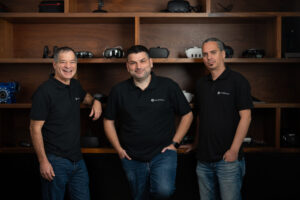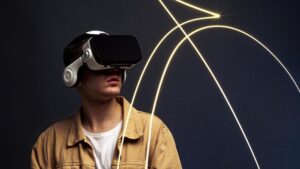Business Challenge:
Universities, colleges, and academic institutions often face difficulties in effectively educating students with cutting-edge technologies for various reasons:
- Technological Obsolescence: Rapid technological advancements can render current “leading-edge” tools obsolete within a few years, making institutions hesitant to invest in potentially outdated technology.
- Lack of Technical Expertise: Many educational institutions lack the in-house technical expertise required to implement and maintain cutting-edge technologies. Training faculty and staff to use and teach with these tools can be time-consuming and costly.
- Compatibility Issues: Integrating new technologies into existing systems and curricula can be challenging due to compatibility issues with current infrastructure and software.
This challenge extends to faculties like mechanical engineering, where students may graduate without adequate experience with emerging XR (Extended Reality) technologies.
The Solution:
To address these challenges, the solution involves adopting an XR platform that mitigates these issues by being continually updated, user-friendly for students without deep technical expertise, and compatible with existing hardware and software.
frontline.io aligns perfectly with these criteria and is recognized by organizations like Hewlett-Packard as a leading XR service. Its short learning curve and SaaS (Software as a Service) nature ensure it remains up to date with minimal effort.
Use Case Scenario:
Braude College in Israel has been looking for XR platform for their students for a couple of years now, but so far all the solutions they have evaluated haven’t provided adequate solutions
At this point the Mechanical Engineering department, under the leadership of Professor Kuperman, decided to introduce XR education using frontline.io.
All the students were assigned the following exercise:
- Create a 3D model using any CAD system.
- Convert the model into a Digital Twin using the fast-track feature of frontline.io.
- Develop animation using the Animation Builder.
- Design a flow using frontline.io Interactive Flow Builder.
- Execute the flow in AR (Augmented Reality) mode using the frontline.io app, on either IOS or Android mobile phone.
Results:
The outcomes were exceptional:
- On average, students required less than 3 hours to learn how to use frontline.io effectively.
- Completing the exercise typically took an additional couple of hours.
- All students successfully created high-quality Digital Twins and executed their procedures in AR mode using their mobile devices.
Student Feedback:
Most notably, students provided overwhelmingly positive feedback:
- All students rated the course highly.
- They mentioned that it demystified XR technology and increased their confidence in using it.
- Many expressed their intention to continue using frontline.io in future courses at the college, even when not required to do so.
Professor Kuperman that the results were amazing and, in the future, he will challenge the students with even more challenging tasks.
Conclusions:
This use case demonstrates several key conclusions:
- Selecting the right XR platform is essential for the successful integration of XR learning in universities and colleges.
- Students can quickly learn and adapt to the system.
- XR courses provide substantial value to students.
- A quality XR course can serve as an incentive for students to enroll in a particular institution.



